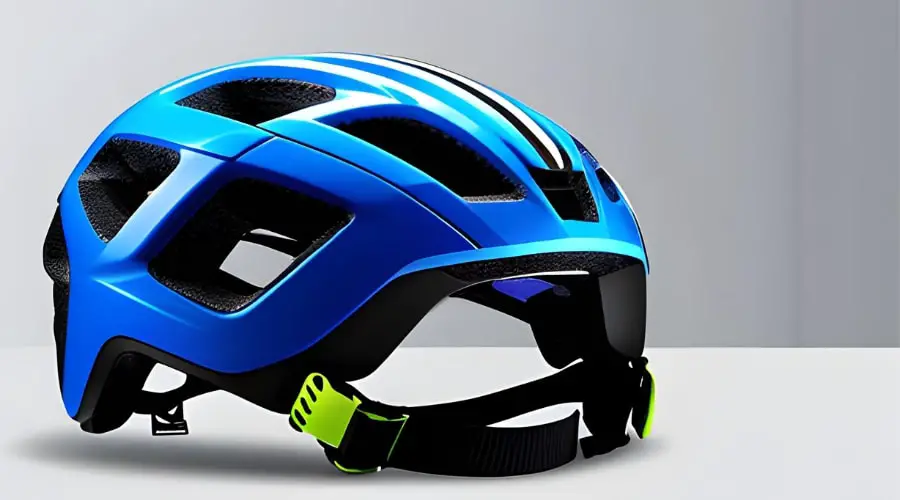Bicycling is an enjoyable and environmentally friendly mode of transportation, as well as a popular form of exercise. But when it comes to safety, one question often arises: is it mandatory to wear a helmet for the bicycle? This article delves into the importance of bicycle helmets, laws and regulations, the benefits of wearing one, how to choose the right helmet, and ways to promote a culture of safety.

The Importance of Bicycle Helmets
Safety Statistics
According to the World Health Organization, roughly 60% of all cycling-related fatalities could be prevented by wearing a helmet. In fact, helmets have been shown to reduce the risk of head injury by up to 85% and the risk of brain injury by up to 88%. These numbers emphasize the importance of wearing a helmet, whether it’s legally required or not.
Types of Injuries Prevented
Helmets primarily protect against head and brain injuries, such as concussions, skull fractures, and traumatic brain injuries. Wearing a helmet can also help prevent facial injuries, dental damage, and neck injuries in the event of a crash.
Laws and Regulations Surrounding Bicycle Helmets
Global Regulations
Laws regarding bicycle helmets vary widely around the world. Some countries, such as Australia and New Zealand, have national laws mandating helmet use for all cyclists. Other countries, like the United Kingdom, have no such requirements.
United States Regulations
In the United States, there is no federal law mandating bicycle helmet use. However, many states and localities have enacted their own laws.
State-by-State Laws
Helmet laws in the U.S. vary by state and age group. Some states require helmets for all cyclists, while others only require them for minors. It’s important to familiarize yourself with the laws in your area to ensure compliance.
Benefits of Wearing a Bicycle Helmet
Injury Prevention
As mentioned earlier, wearing a helmet can significantly reduce the risk of head and brain injuries. This not only protects your health but can also save you from costly medical bills and long recovery times.
Increased Visibility
Many helmets feature reflective materials or bright colors, which can help increase your visibility to motorists, pedestrians, and other cyclists. This is particularly important during low-light conditions, such as the early morning or evening rides.
Weather Protection
A helmet can also provide some protection from the elements. In hot weather, it can shield your head from the sun, while in colder temperatures, it can help keep your head warm. Additionally, a helmet can protect your head from rain and wind during inclement weather conditions.
Choosing the Right Bicycle Helmet
Sizing and Fit
A properly fitted helmet is crucial for optimal protection. Measure your head circumference and consult the manufacturer’s sizing guide to find the correct size. The helmet should fit snugly but comfortably, with the front edge sitting just above your eyebrows. Most helmets also have adjustable straps to ensure a secure fit.
Safety Standards
When purchasing a bicycle helmet, look for certification from recognized safety organizations, such as the Consumer Product Safety Commission (CPSC) in the United States or the European Committee for Standardization (CEN) in Europe. These certifications ensure that the helmet meets specific safety requirements and has undergone rigorous testing.
Helmet Styles
There are various helmet styles available, each designed for different types of cycling. Road helmets are lightweight and well-ventilated, ideal for long rides on paved surfaces. Mountain bike helmets offer more coverage, particularly at the back of the head, to protect against falls on rough terrain. Commuter helmets often prioritize style and comfort, sometimes featuring built-in lights or visors.
Promoting a Culture of Safety
Educating Cyclists
Encouraging helmet use begins with education. Programs like bike safety workshops and school presentations can help raise awareness about the importance of wearing a helmet and proper cycling practices.

Community Initiatives
Community events, such as helmet giveaways or subsidized helmet programs, can make it easier for cyclists to access affordable, high-quality helmets. Collaborating with local bike shops and organizations can also help promote a culture of safety and encourage responsible cycling habits.
Why I Don’t Wear a Bicycle Helmet
FAQs:
1. Is it mandatory to wear a helmet while riding a bicycle?
Laws regarding bicycle helmets vary by country and state. It is important to familiarize yourself with the local regulations to ensure compliance. Regardless of legal requirements, wearing a helmet is always a smart safety precaution.
2. How can I find the right helmet size for me?
Measure your head circumference and consult the manufacturer’s sizing guide to determine the correct size. The helmet should fit snugly but comfortably, with the front edge just above your eyebrows.
3. How often should I replace my bicycle helmet?
It is generally recommended to replace your helmet every 3-5 years or after a significant impact, as the protective materials can degrade over time or become compromised during a crash.
4. Can I use a helmet for other activities, like skateboarding or rollerblading?
Some helmets are designed for multi-sport use, but it’s important to verify that your helmet meets the appropriate safety standards for each activity. When in doubt, consult the manufacturer’s guidelines.
5. How can I encourage others to wear a helmet?
Education, community initiatives, and leading by example are all effective ways to promote helmet use among cyclists. Share information about the benefits of helmets, participate in local safety programs, and always wear your own helmet when cycling.
Conclusion
While laws regarding bicycle helmets vary across the globe, the benefits of wearing a helmet are undeniable. A helmet can greatly reduce the risk of head and brain injuries, increase visibility, and provide weather protection. By choosing the right helmet and promoting a culture of safety, cyclists can enjoy the many benefits of bicycling while staying protected on the road.
Helmetslab is a website that focuses on providing in-depth reviews and information about different types of helmets, including motorcycle helmets and others helmets. I am writing a post with proper research on the info that helps helmet users.
